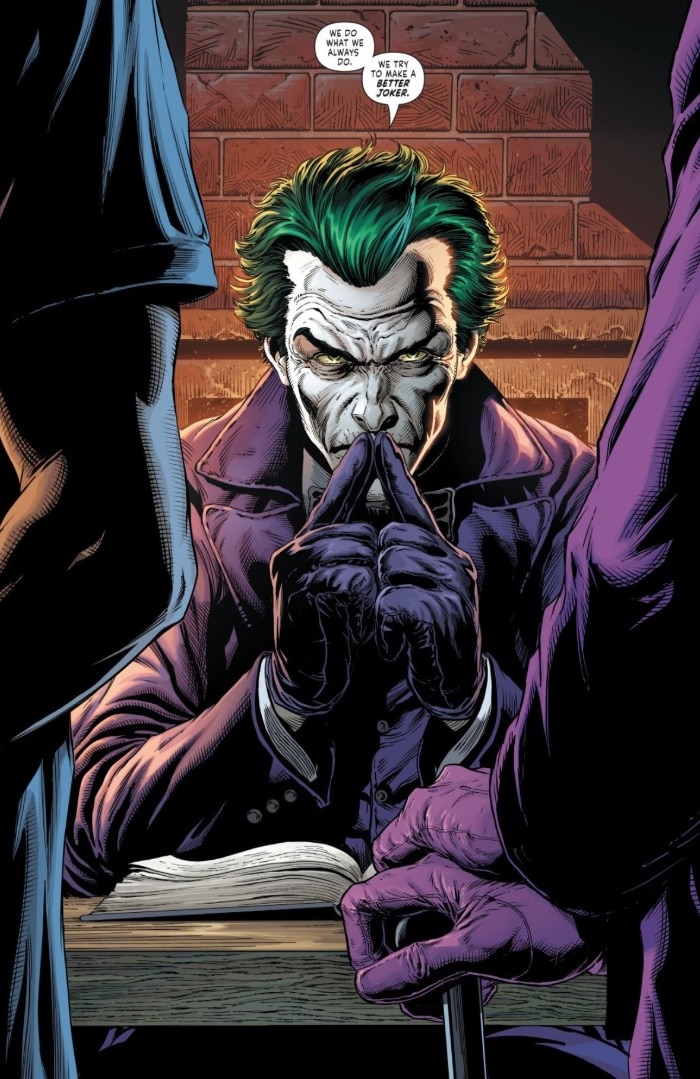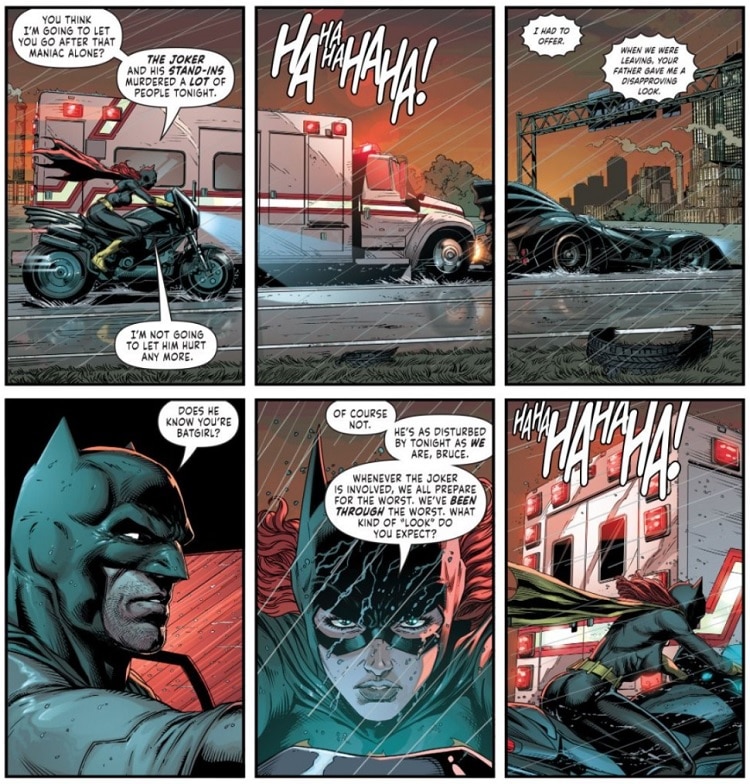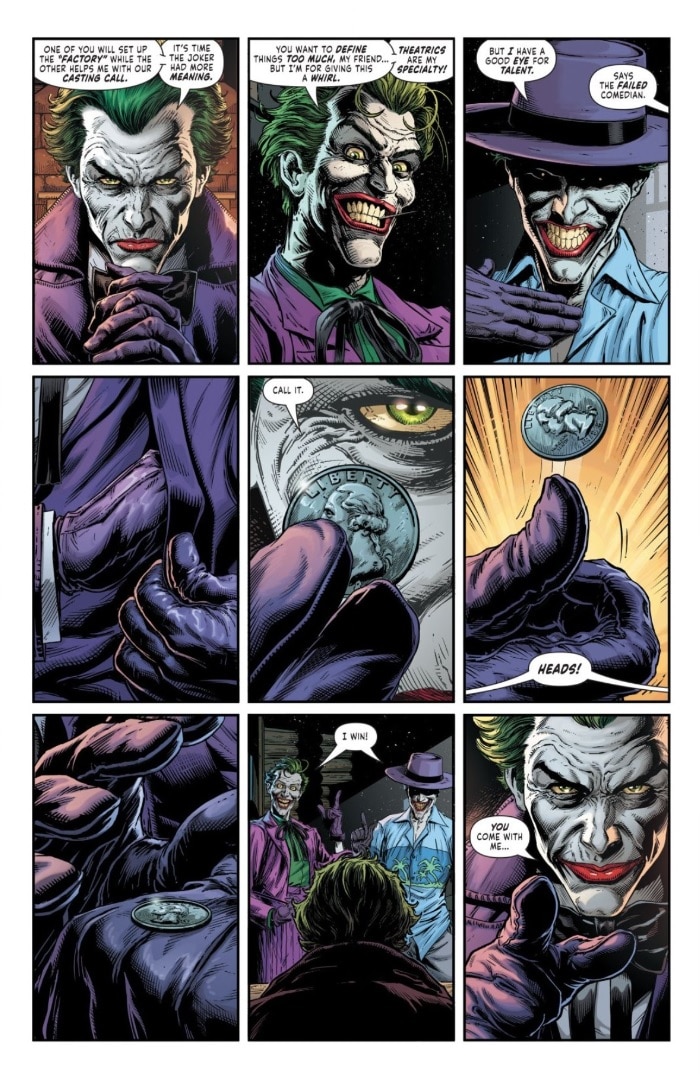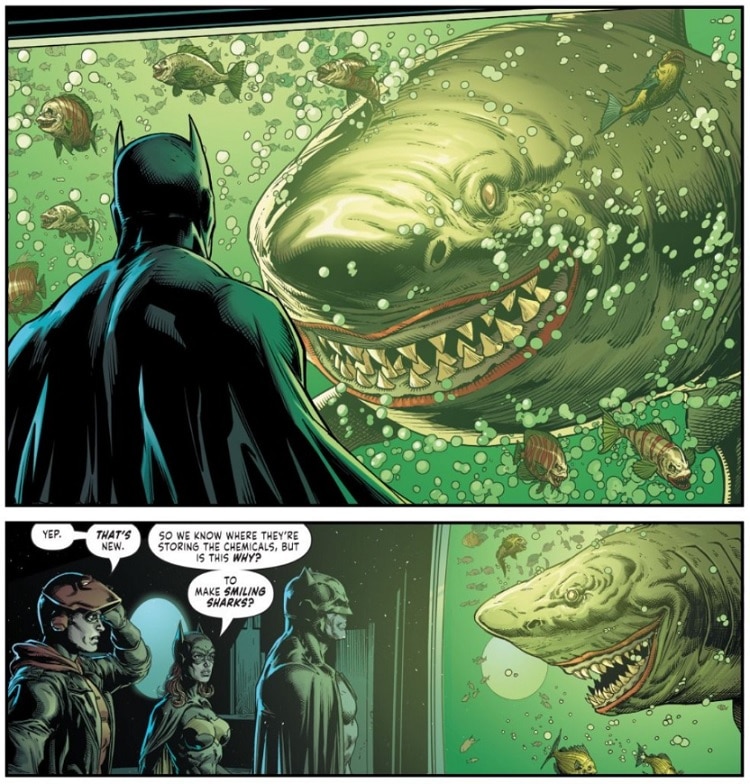After the shocking ending to Batman: Three Jokers #1—seriously, did you see what Jason Todd did?—the stakes continue to escalate in Batman: Three Jokers #2, out this week from the creative team of writer Geoff Johns, artist Jason Fabok and colorist Brad Anderson.
Prior to the release of Three Jokers #1, we caught up via phone with Fabok from his home in Canada to discuss teaming with Johns for the long-anticipated series, the influence of Alan Moore and Brian Bolland’s Batman: The Killing Joke and the enduring impact of character’s very first appearance back in 1940.

How did you approach the visual style of Batman: Three Jokers?
Right from the beginning, Geoff and I had talked a lot about Killing Joke. I studied what Brian Bolland was doing and used that as my foundation to build upon. At the same time, I wanted to infuse it with some of my favorite influences. There are nods to Batman ’89, in the design of the buildings and the setting of Gotham. That was my introduction to Batman, I’ve always wanted to see it come alive on the page.
I’m using that 1980s aesthetic, and then bringing it to 2020. Reaching into the past to get my foundation, and then taking that forward and into my own direction. I just wanted to go with my gut feeling of how I’ve always wanted to draw a Batman story and it flowed from there. Even the designs of Barbara Gordon are taken right out of classic 1980s Batgirl comics—Batgirl’s Bat-bike is taken directly out of old-school comics from the ’70s and ‘80s.
Especially when it comes to panel layouts, you’re going to notice a lot that comes directly out of Killing Joke. There are a lot of nods to that.

What was your process in making each of the titular Three Jokers distinct?
We did lots of research. I did tons of different drawings. I probably did concept sketches for almost every single Joker who’s ever appeared in comics history. (Laughs) Different costumes, even just subtle little changes.
In the end, we decided on the Golden Age Joker, who is this stoic thinker—he’s not a psychotic, laughing clown. He just kind of stares you down and he’s really creepy. He’s actually become my favorite. Then you’ve got your prankster Joker from the ‘50s; then you have your Killing Joke, modern Joker.
I consciously chose to draw the characters with very similar bone structure and builds. People keep bringing up, “How come Batman wouldn’t notice there are three different Jokers?” It’s because they look like they all could be the same guy. They all fit together, but at the same time, there are subtle differences, especially when it comes to personalities.

I’m drawing from all eras, and different looks and different takes. There are even some references to Batman: The Animated Series in this book as well. I can even hear Mark Hamill’s voice coming out of the Joker when I’m drawing him. I’m not really interesting in deviating too far from what everybody’s expecting—I really wanted to deliver a classic Joker, the way that I want to see Joker look in a comic book.
Have you learned anything about the Joker that you didn’t know before?
I really loved going back and reading older comics. I’ve probably read Killing Joke now more than any other single comic book. There are so many little subtle things that Brian Bolland does with his art, and little subtle things that Alan Moore drops in there about the character of the Joker that you pick up as you read it more and more.
I really enjoy the Golden Age Joker. I re-read Batman #1 and really enjoyed that issue. I still feel like that issue stands up—the way the Joker was originally portrayed as this really freaky, scary gangster, but not in a super-psychotic way. He’s a thinking villain—he’s going to outsmart you. He can go toe to toe with Batman when it comes to his mind, and the way he can manipulate him. When you think back to Batman ’89 and Jack Nicholson’s performance, I think he’s pulling a lot from that first issue. You can really see it.

It really made me think—there might be so many different takes on the Joker that have just been kind of forgotten. When people read Three Jokers and they see this Golden Age Joker in our book, they’ll be opened up to a different version of the Joker—something you haven’t seen on the page very often, and yet, it’s classic. And there are some incredible lines that Geoff has written for this character. It’s going to terrify them.
This book is an exploration of the Joker, it’s an exploration of the history of Batman and the Joker. I’ve been viewing it as a love letter to the fans of Batman—I really want to give them something great. I don’t think anybody’s going to see where we’re going with this.
Batman: Three Jokers #2 by Geoff Johns, Jason Fabok and Brad Anderson is now available in print and as a digital comic book.















